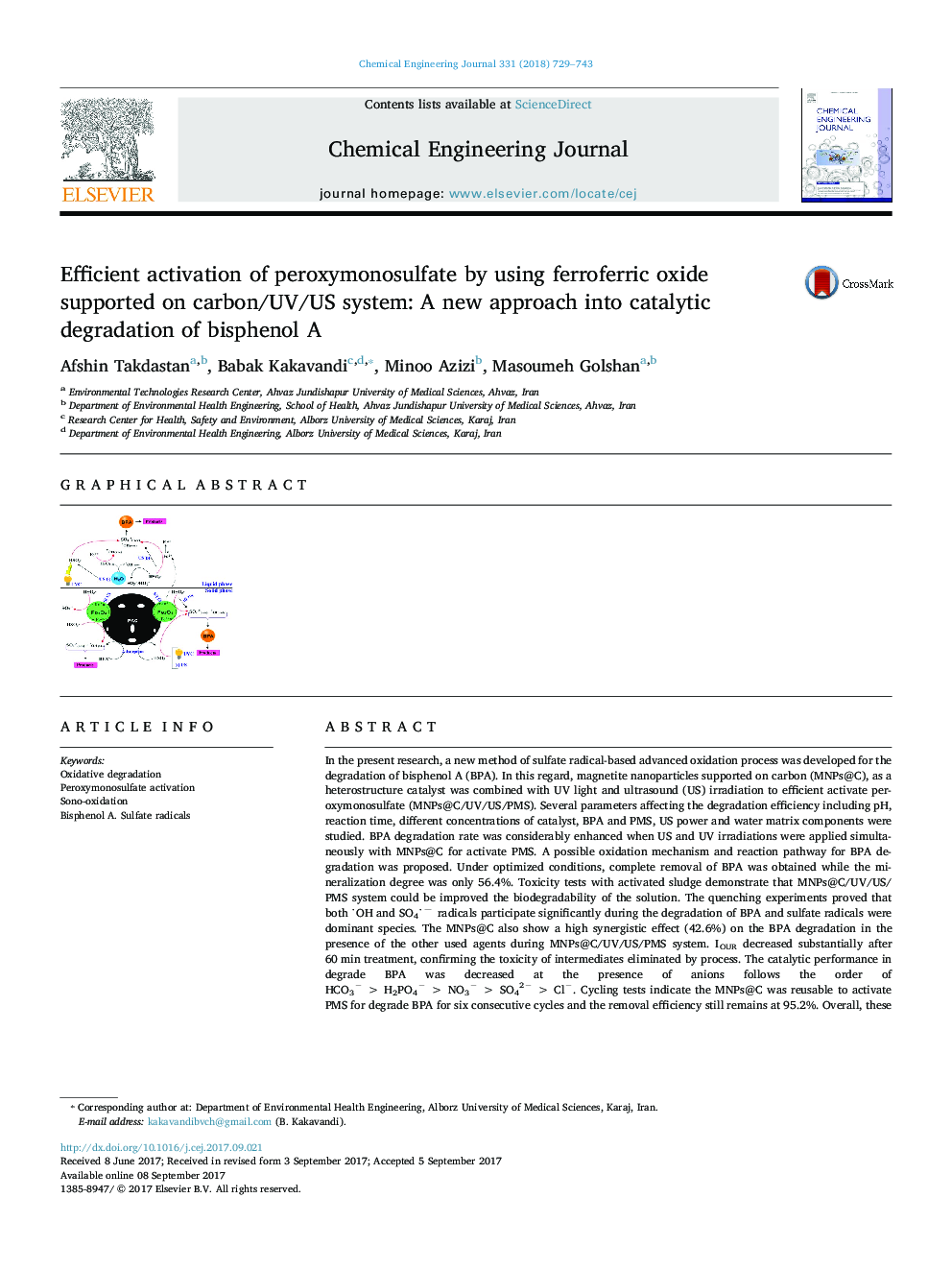| کد مقاله | کد نشریه | سال انتشار | مقاله انگلیسی | نسخه تمام متن |
|---|---|---|---|---|
| 4762817 | 1422947 | 2018 | 15 صفحه PDF | دانلود رایگان |

- A new combination of MNPs@C/UV/US/PMS was applied to activate PMS.
- Activation of PMS by MNPs@C enhanced significantly when UV/US irradiations used.
- SO4â shows a dominant role in controlling the degradation reaction of BPA.
- MNPs@C was reusable and the removal efficiency still remains at 95.2% after six cycles.
- Toxicity of intermediates eliminated by process when IOUR decreased substantially.
In the present research, a new method of sulfate radical-based advanced oxidation process was developed for the degradation of bisphenol A (BPA). In this regard, magnetite nanoparticles supported on carbon (MNPs@C), as a heterostructure catalyst was combined with UV light and ultrasound (US) irradiation to efficient activate peroxymonosulfate (MNPs@C/UV/US/PMS). Several parameters affecting the degradation efficiency including pH, reaction time, different concentrations of catalyst, BPA and PMS, US power and water matrix components were studied. BPA degradation rate was considerably enhanced when US and UV irradiations were applied simultaneously with MNPs@C for activate PMS. A possible oxidation mechanism and reaction pathway for BPA degradation was proposed. Under optimized conditions, complete removal of BPA was obtained while the mineralization degree was only 56.4%. Toxicity tests with activated sludge demonstrate that MNPs@C/UV/US/PMS system could be improved the biodegradability of the solution. The quenching experiments proved that both OH and SO4â radicals participate significantly during the degradation of BPA and sulfate radicals were dominant species. The MNPs@C also show a high synergistic effect (42.6%) on the BPA degradation in the presence of the other used agents during MNPs@C/UV/US/PMS system. IOUR decreased substantially after 60 min treatment, confirming the toxicity of intermediates eliminated by process. The catalytic performance in degrade BPA was decreased at the presence of anions follows the order of HCO3â > H2PO4â > NO3â > SO42â > Clâ. Cycling tests indicate the MNPs@C was reusable to activate PMS for degrade BPA for six consecutive cycles and the removal efficiency still remains at 95.2%. Overall, these results reveal that the activation of PMS by MNPs@C/UV/US system is an efficient and promising advances oxidation technology for the treatment of BPA-contaminated waters and wastewaters.
107
Journal: Chemical Engineering Journal - Volume 331, 1 January 2018, Pages 729-743